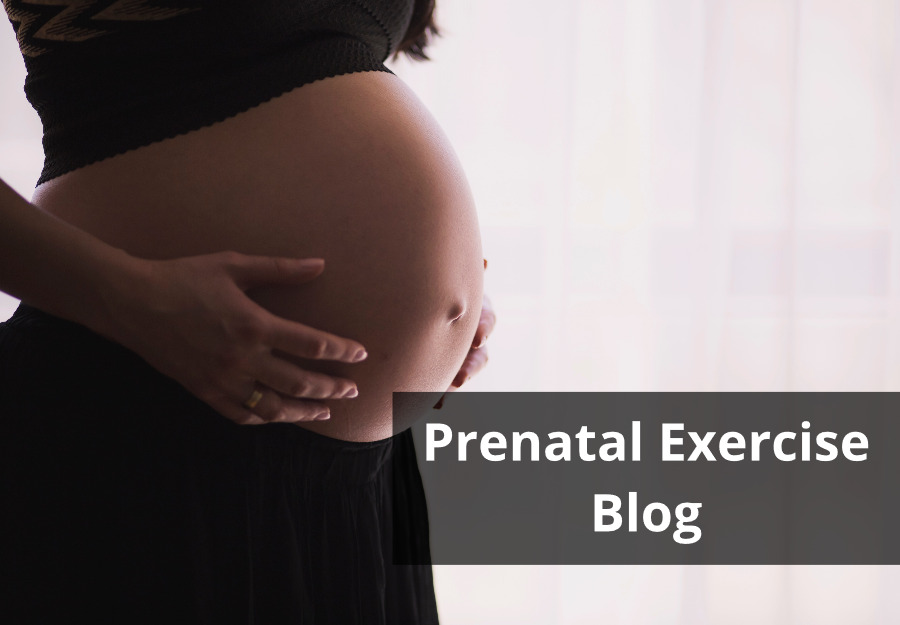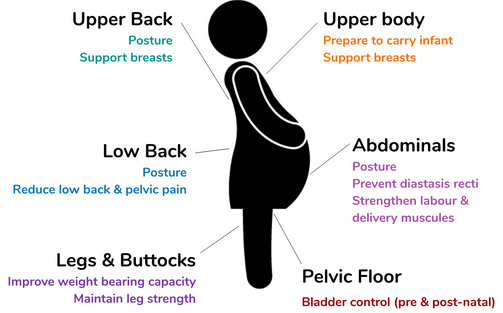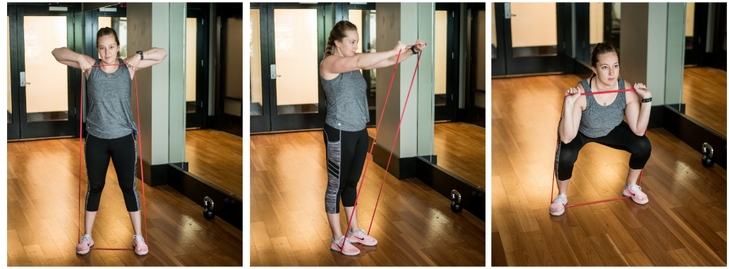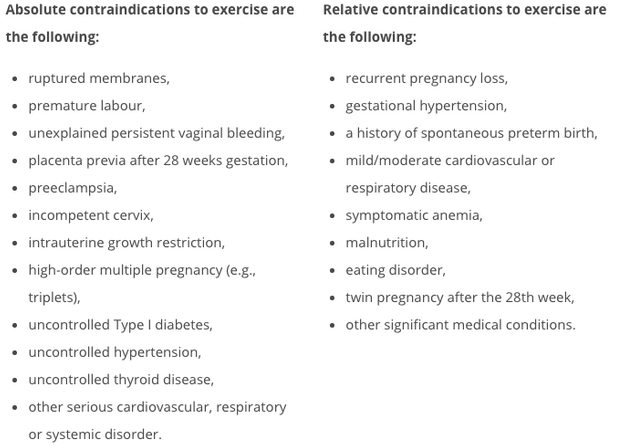Total Therapy Blog

Prenatal Exercise Blog
Prenatal Exercise: Understanding the Guidelines
Expecting a little one? Whether you’re expecting your first child, trying to get pregnant, or are expanding your family, this article is for you! For many women, exercising during pregnancy remains a mystery. Thankfully the days of bedrest for all pregnant women are well behind us. This year, the Canadian Society for Exercise Physiology (CSEP) released updated guidelines for physical activity throughout pregnancy. This article will help you understand the new guidelines and implement them into your routine. The bottom line is that all women without serious red flags (explained later) should be physically active throughout pregnancy, and appropriate exercise is associated with lower risk of pregnancy-related illnesses and complications. If your partner, sister, or friend is pregnant, don’t feel left out! This article is for you too; the more supportive exercise companions a pregnant woman has, the better!

What do you mean by “physical activity?”
During pregnancy, the physical activity guidelines look similar to those for adults in the general population, with a few key differences. A target of 150 minutes (2.5 hours) of moderate-intensity exercise per week shows the greatest benefit to maternal and fetal health. What is moderate-intensity you ask? “Moderate” is subjective, and will be different for everyone, but refers to any activity that elevates your heart rate, allowing you to talk throughout, but not quite sing. Something you’d rate as a 3-4 out of 10 effort-wise. Brisk walking, stationary cycling, water aerobics, and general gardening are all examples of moderate-intensity. Ideally, these 150 minutes are accumulated over at least three days per week, though if you can, aim to be active every day of the week!
If you were used to exercising at a higher intensity prior to pregnancy, you can continue to do so as long as you do not have any contraindications and you do not exceed pre-pregnancy intensity. If you are new to exercise, or are not currently active, don’t worry about meeting these recommendations all at once. Gradually increasing your weekly activity toward the recommended level is the safest way to progress. Something is better than nothing.
Which exercises are best?
The new guidelines recommend a variety of aerobic and resistance exercises to achieve the greatest health benefits. Aerobic exercises are important for maintaining cardiovascular health, while resistance exercises are necessary for maintaining and improving muscular strength to prepare for the increased physical demands of pregnancy, labour, and caring for your baby.
Low-impact exercises such as walking, stationary cycling, swimming, or elliptical are all good choices for aerobic activities. Exercises involving jumping, running, or potential for impact or falls should be avoided, and will likely be uncomfortable later in pregnancy anyway. CSEP recommends beginning with three aerobic sessions per week, building up to four sessions of approximately 30 minutes each. While you’re pregnant, it is important to avoid overexertion and overheating, so check in with yourself using the “talk test” throughout your session. If you are breathing harder, but can still carry on a conversation, you’re in the right zone.
Many pregnant women shy away from resistance exercises, but they are vital to include in a balanced routine. Resistance exercises should target all major muscle groups and be performed at least twice per week. Again, stick to exercises you’re familiar with. Pregnancy is not the time to experiment with intensities or modalities you are not accustomed to. If you don’t know where to start, a Kinesiologist can help design a safe, effective program.

Considerations for resistance exercise:
- In the last 4 months of pregnancy, modify exercises on your back if this position causes discomfort.
- Your joints will begin to loosen slightly; always move in control when exercising and avoid sudden direction changes.
- Avoid strenuous abdominal exercises if you develop diastasis recti (rippling or bulged tissue along the midline of the abdomen).
- Avoid straining and sustained breath-holding. Exhale on exertion.

What are the benefits?
In addition to the well-documented benefits of regular exercise, prenatal exercise has the following benefits:
- Reduced risk of gestational diabetes
- Reduced risk of preeclampsia
- Improved ability to cope with labour
- Normal birth weight
- Preventing excess maternal weight gain
- Improved infant cardiac and motor function
Is there anyone who shouldn’t exercise?
There are certain medical conditions called “absolute contraindications” which, if present, indicate that a woman should not exercise during pregnancy. Women with “relative contraindications” should exercise caution and consult their doctor before starting a new exercise routine. If you or your partner is in any doubt about any of the conditions listed below, play it safe and seek medical advice before exercising.

You’ve convinced me! Where should I start?
- Complete the PARmed-X for Pregnancy form and discuss your responses with your doctor.
- Recruit your team: Surround yourself with supportive exercise partners who will suit up and get moving with you. Be it your partner, other pregnant friends, or a professional, community is critical for maintaining a sustainable exercise habit during and after pregnancy.
- Prepare for ups and downs: Pregnancy is a trying time physically and emotionally, and your body is undergoing significant changes. Be kind to yourself.
Learn more about pre- and postnatal exercise at Total Therapy here.
References:
CSEP PARmed-X for Pregnancy: http://www.csep.ca/cmfiles/publications/parq/parmed-xpreg.pdf
CSEP guidelines for pregnancy: https://csepguidelines.ca/guidelines-for-pregnancy/
CSEP 24-hour movement guideline glossary: https://csep.ca/en/guidelines/glossary-2017
Davenport MH, Ruchat S, Poitras VJ, et al. Prenatal exercise for the prevention of gestational diabetes mellitus and hypertensive disorders of pregnancy: a systematic review and meta-analysis. British Journal of Sports Medicine 2018;52:1367-1375. https://bjsm.bmj.com/content/52/21/1367.abstract
May LE, Meacham C, Gustafson K, Glaros, A. (2011). Gestational Exercise effects on the Infant Heart. Conference: FASEB, Volume: 25:1108.5. https://www.researchgate.net/publication/235992173_Gestational_Exercise_effects_on_the_Infant_Heart
Wing CH, Stannard AB. Pregnancy and exercise guidelines: Fifty years makes a difference. ACSM’s Health & Fitness Journal: March/April 2016 – Volume 20 – Issue 2 – p 4–6. doi: 10.1249/FIT.0000000000000183. https://journals.lww.com/acsm-healthfitness/Fulltext/2016/03000/Pregnancy_and_Exercise_Guidelines__Fifty_Years.4.aspx








Follow Us!
& Stay Up To Date
BLOG